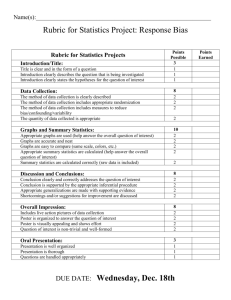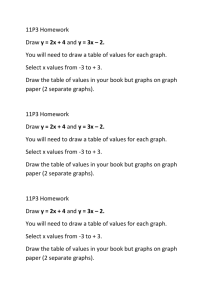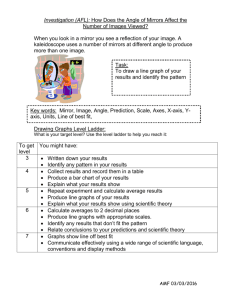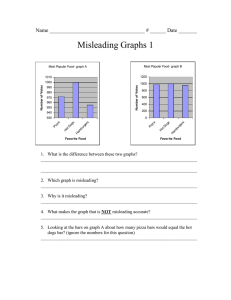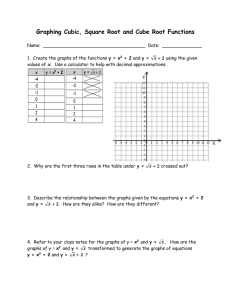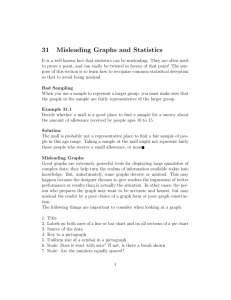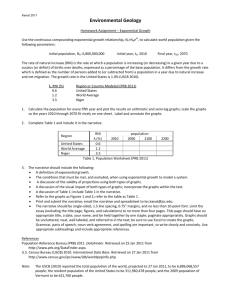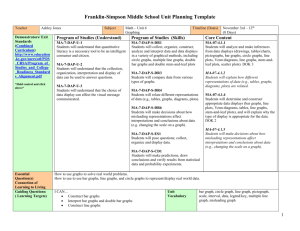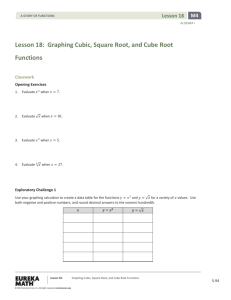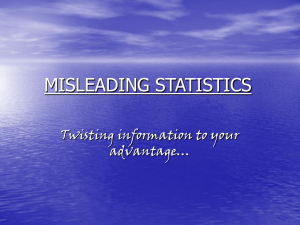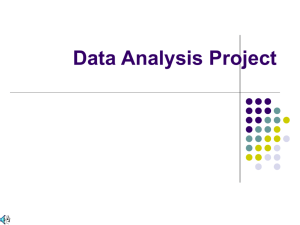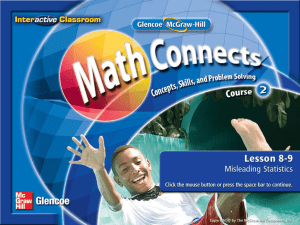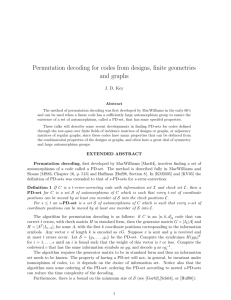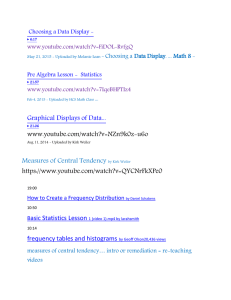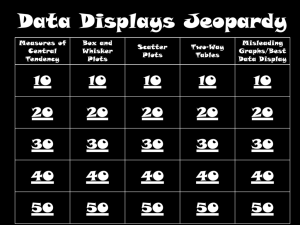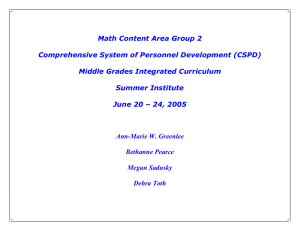Statistics Text: Elementary Statistics a Step by Step Approach Allan
advertisement
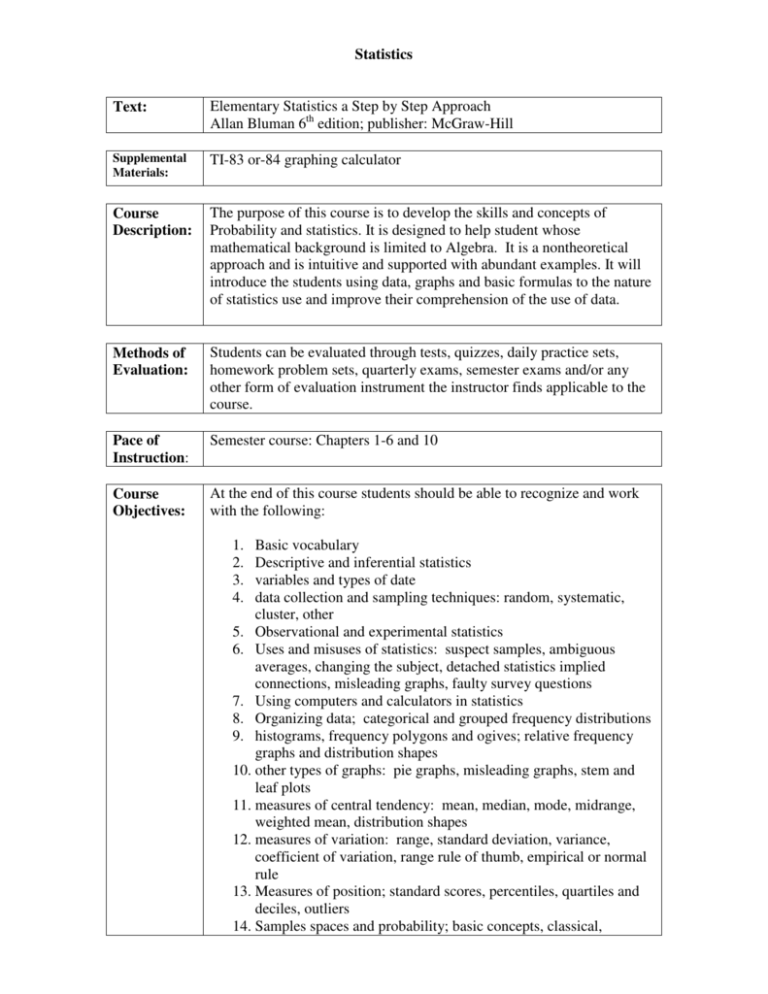
Statistics Text: Elementary Statistics a Step by Step Approach Allan Bluman 6th edition; publisher: McGraw-Hill Supplemental Materials: TI-83 or-84 graphing calculator Course Description: The purpose of this course is to develop the skills and concepts of Probability and statistics. It is designed to help student whose mathematical background is limited to Algebra. It is a nontheoretical approach and is intuitive and supported with abundant examples. It will introduce the students using data, graphs and basic formulas to the nature of statistics use and improve their comprehension of the use of data. Methods of Evaluation: Students can be evaluated through tests, quizzes, daily practice sets, homework problem sets, quarterly exams, semester exams and/or any other form of evaluation instrument the instructor finds applicable to the course. Pace of Instruction: Semester course: Chapters 1-6 and 10 Course Objectives: At the end of this course students should be able to recognize and work with the following: 1. 2. 3. 4. Basic vocabulary Descriptive and inferential statistics variables and types of date data collection and sampling techniques: random, systematic, cluster, other 5. Observational and experimental statistics 6. Uses and misuses of statistics: suspect samples, ambiguous averages, changing the subject, detached statistics implied connections, misleading graphs, faulty survey questions 7. Using computers and calculators in statistics 8. Organizing data; categorical and grouped frequency distributions 9. histograms, frequency polygons and ogives; relative frequency graphs and distribution shapes 10. other types of graphs: pie graphs, misleading graphs, stem and leaf plots 11. measures of central tendency: mean, median, mode, midrange, weighted mean, distribution shapes 12. measures of variation: range, standard deviation, variance, coefficient of variation, range rule of thumb, empirical or normal rule 13. Measures of position; standard scores, percentiles, quartiles and deciles, outliers 14. Samples spaces and probability; basic concepts, classical, complementary events, empirical, law of large numbers, subjective probability and risk taking 15. Addition rules for probability 16. Multiplication rules of probability 17. Counting rules 18. Probability distribution 19. Expectations 20. Binomial distribution 21. Normal distribution: standand, applications 22. scatter plots 23. correlation 24. regression 25. line of best fit 26. line equations 27. common sampling techniques





